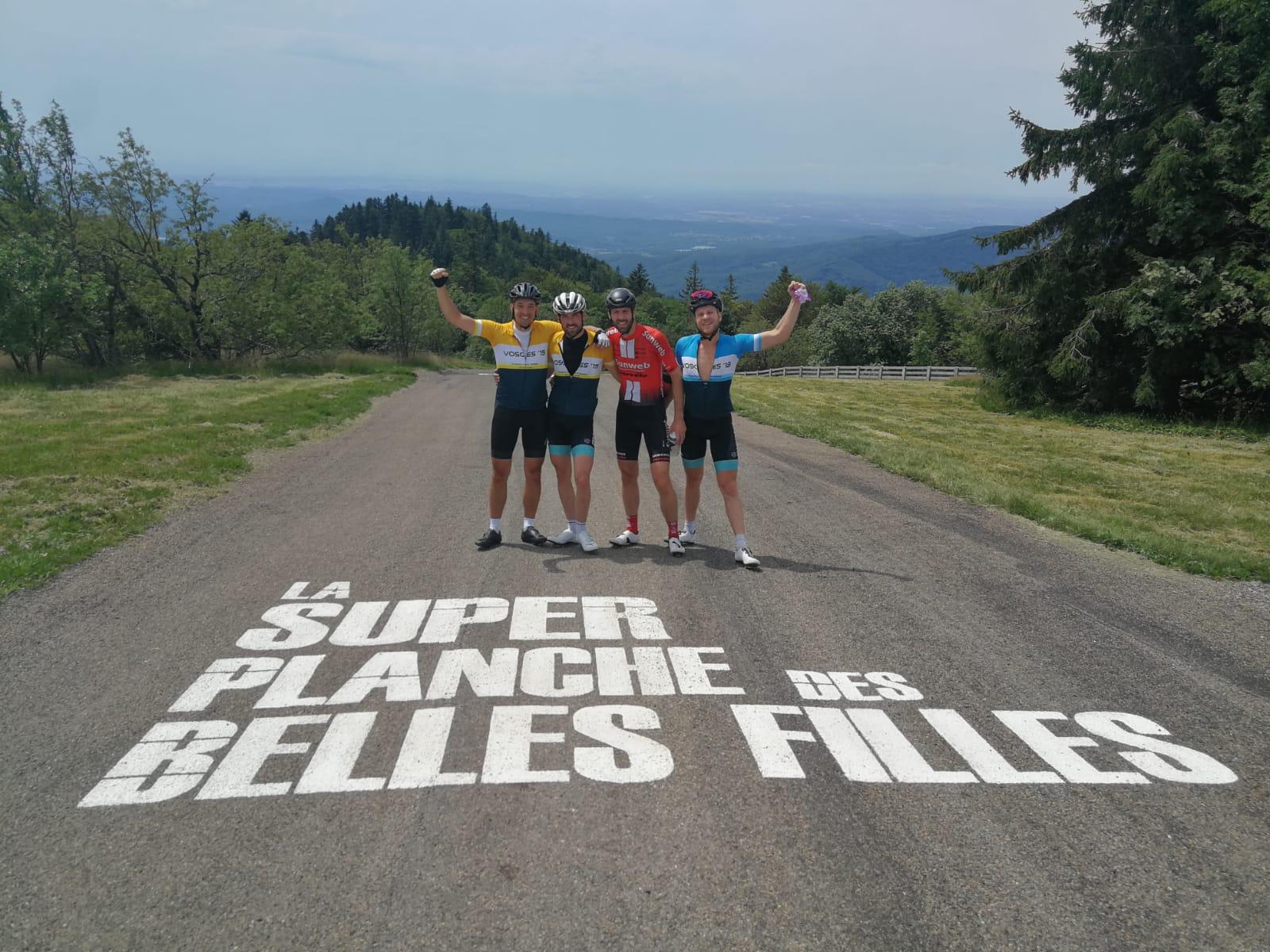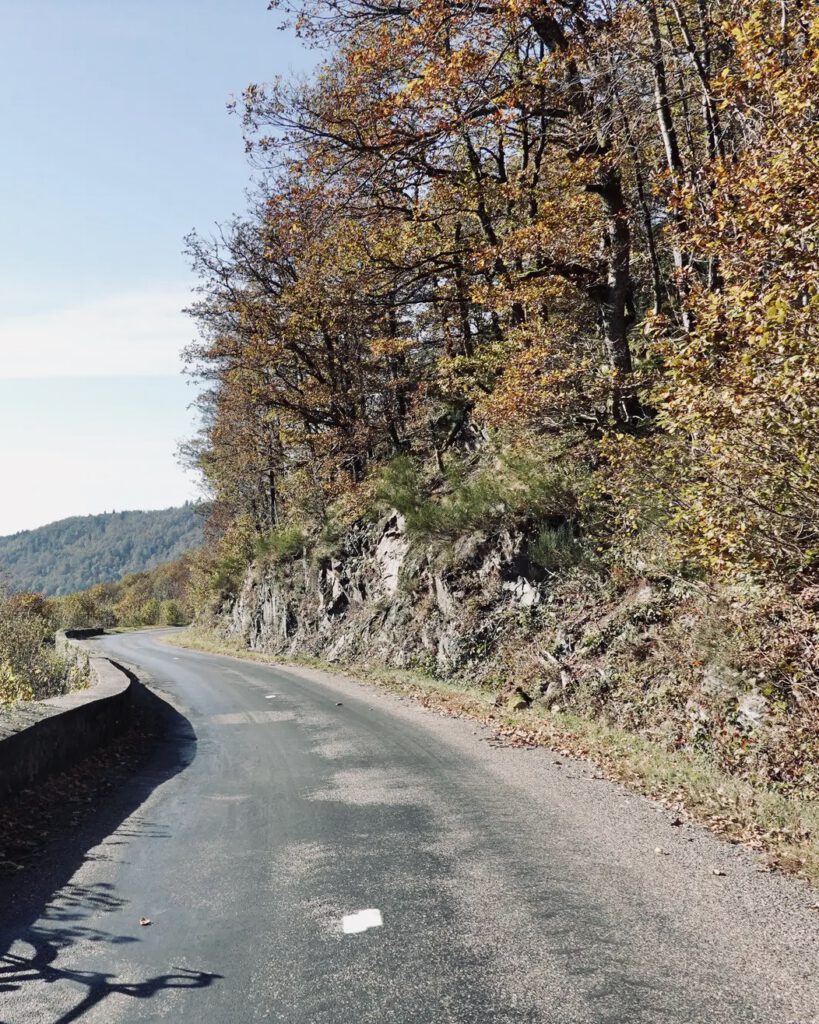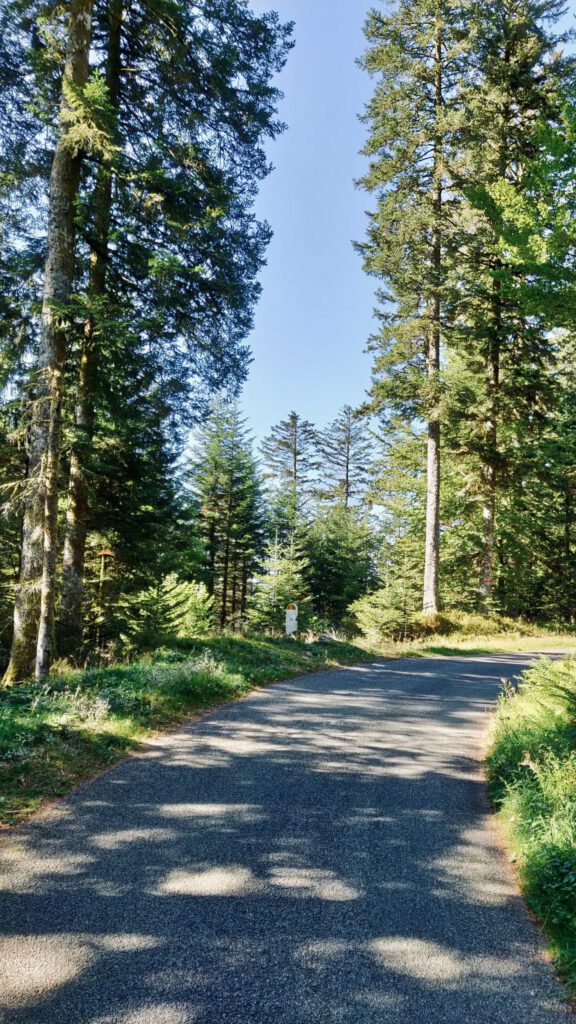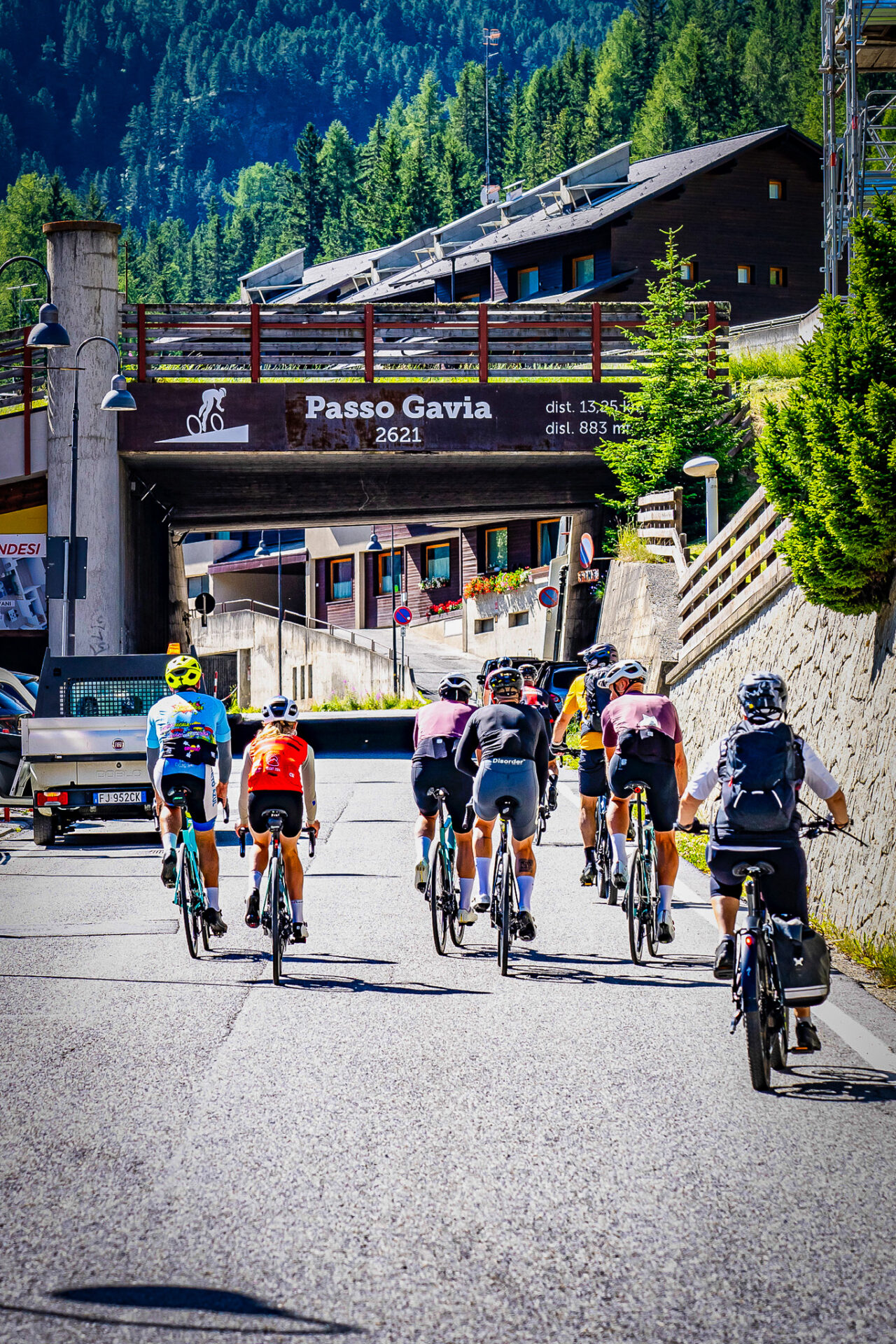The status of a climb is made by the stories. Personal stories of, say, overcoming fears or reaching a higher goal. Professionals who literally give their all on their way to victory, eternal fame or the eternal hunting grounds. The flanks of the Alpe d'Huez, Stelvio and Mont Ventoux are littered with stories. The stories are often more beautiful than the climb itself. Not for nothing is there a site titled: 100 climbs better than Alpe d'Huez. Yet millions of tourists flock to the 21 corners of the Isère to ride them and measure itself against the rest of the world for a while. That Super Planche des Belles Filles still needs some work on its status is logical. We make a stab at it with a new story. Cycling in the Vosges in the wake of the tour.

La Planche des Belles Filles
The shelf of the pretty girls, as the literal translation reads, only made its appearance in the Tour's route book in the 2000s. In 2012, Froomey was first at the top of the beautiful ladies. Back then it was still the finish without the stretch of gravel added later. The more spectacle the better. Every finish at the top of this climb makes for new stories. With the climb extended by 900 metres of unpaved road, the gradients exceed 20 per cent. It almost feels Italian or Spanish as the pros too rake upwards at the slightest revs. Prudhomme has struck a good blow with the introduction of this ladies' board in the men's peloton.
More great stories
That the name Planche des Belles Filles has an interesting genesis should come as no surprise. There are two variants, and of course there is a somewhat boring one and one where the imagination is engaged. In the simple version, the name is a corruption of 'lieu peuple des belles fahys.' In other words, a place for beautiful beeches. Planche was borrowed from Plancher-les-mines and voila, see there the explanation.
In the mythical version, the hill was a refuge for ladies from the region, fleeing from loose warriors. That they preferred to take their own lives by jumping off a plank, into the water, rather than surrender made the story even stronger. Small detail: the jump into the water would mean a new world record. But surely it is much nicer to tell home that a place name has such a history of existence, rather than a corruption of another word? In our family, we are actually just called Koesloot, but a careless official in the 18th century turned it into 'elletje'. That's how it goes.


Cycling in the Vosges - Route des Belles Filles
Back to the Tour route. Unlike others, here you start at the top of the mountain. Perhaps somewhat illogically, but with the descent you then know immediately what awaits you on the way back. You follow the Route des Belles Filles, counterclockwise. The reason Planche des Belles Filles ever came into the picture was because of the Trois Ballons cyclo. You have several 'ballons' around here, including the Petit Ballon and the well-known Grand Ballon. On today's route, you get to work right after the descent on your way to the summit of the Ballon de Servance, a more unknown balloon in the region. The summit is at 1158 metres and the climb from this side is one that explodes six kilometres before the end. You ride a kilometre here at more than 10 per cent average and much of it above eight per cent. Watch out you don't blow yourself up on this balloon.

Mountain Museum - silver lining
The descent of the Ballon de Servance, which is a lot gentler than the climb on the other side. Take care because as you sail down you will pass the local mountain museum. Here you can learn a bit more about the local history of the area, of life in other times and more. Maybe not something to stop during the ride, but definitely something to briefly visit later. You'll also find further down the road the silver mines where this precious metal used to be mined. At the bottom of the mountain, we turn left and continue on the route of the lovely ladies. Cycling in the Vosges is always surprising.
Follow the river
We have already crossed the river d'Ognon on the ascent and with the turn to the left we follow the ze stream for quite a few kilometres. At first, it continues down the valley and crosses the river again at Servance. Up to Belonchamp it rolls downhill and then we turn left towards a warm-up for the final climb. The climb to La Chevestraye is right on the route. For ten kilometres it goes up somewhat irregularly. You can't even call it a real col. If you're feeling adventurous, you can turn towards Belfahy at the top and take the Col des Chevreres there. From Servance, that's like a SuperPlanche but less high.

Steep, steeper, gravel
After a short descent, we are finally at the bottom of the shelf. The climb no one wants to do but rides anyway. Because it is one to tick off on a list. It is not one you ride for its beauty, but mostly for its challenge. It is seven kilometres long at 8.8 per cent uphill. This is a kind of Passo Giau that no one has good memories of. The cheers on the road help to relieve some of the pain. At the restaurant, the road rises at 22 per cent. Those cola and pasta are calling very loudly now! For the mere mortal, the last stretch with gravel is less accessible. So the finish is on the original Planche, where you can for a moment crown yourself the hero of the group as Chris Froome or Vicenzo Nibali. Or, of course, you can drag yourself up as a baroudeur. That's more my cup of tea. Fortunately, we still have the photos.



Route
Want to take a tour of the beautiful Vosges Mountains? Or actually it's the Haute Saone, but well, we count it both right. You can download the route below, as well as all the other Tour routes created this year. Also check out the routes at Northern France or in Switzerland, which you can find further on the site.





